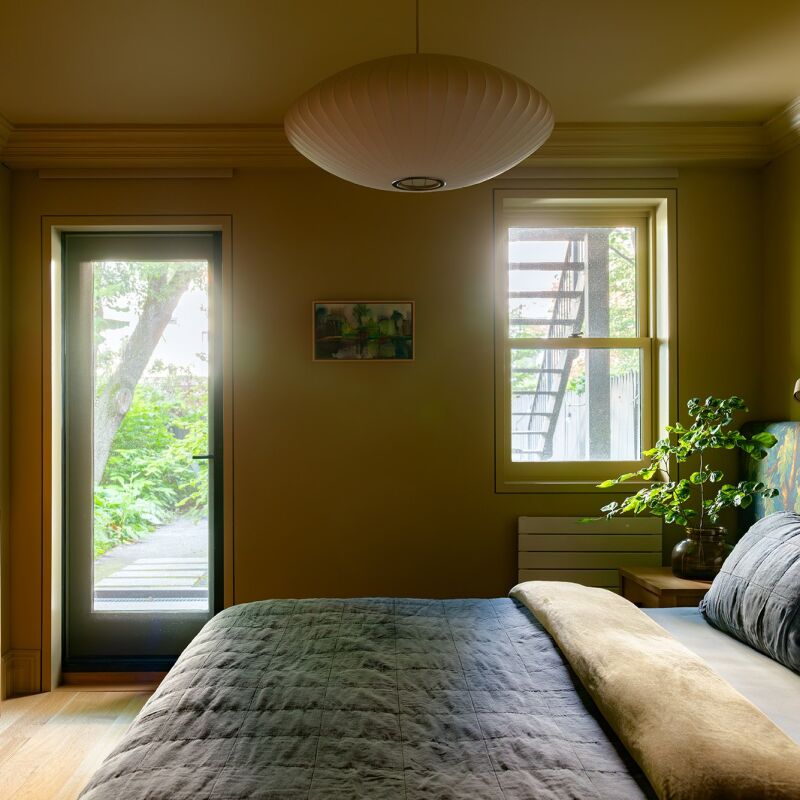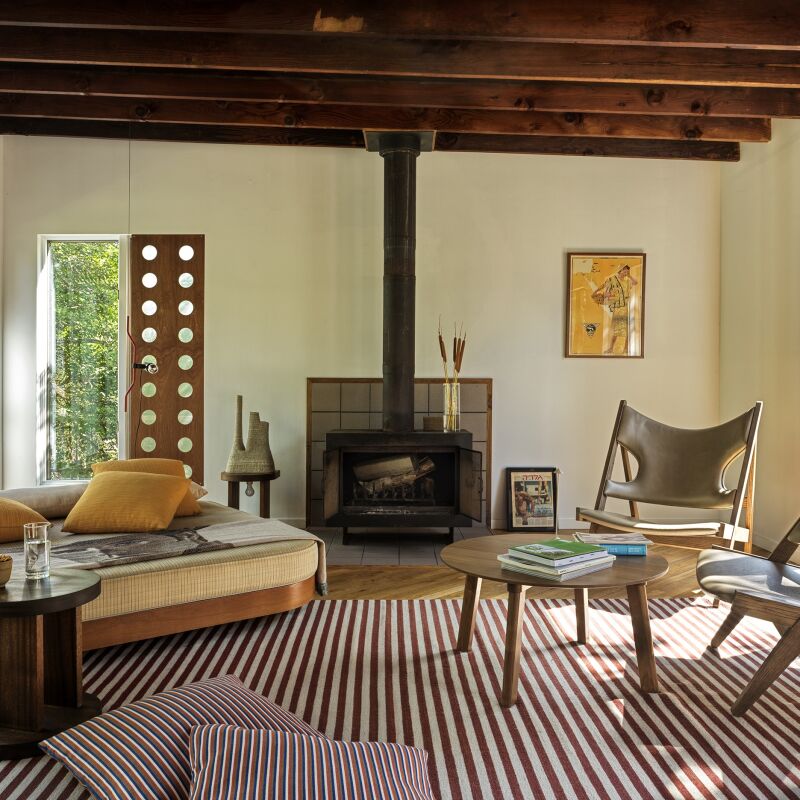Helma Bongenaar is a collector of the pre-loved: silk scarves, mix-and-match French coffee bowls, hand mirrors, ceramic spoons. “Collecting is in my genes,” she says. “My parents were also real collectors, and as a child I would scour flea markets with them, always looking for a ‘trouvaille,'” a find.
Helma—a stylist and cook, author of the Dutch-French cookbook Aan tafel bij Au Bon Coin, and cofounder of the newly launched Sentimental Journal magazine—lives in a classic corner home in the center of Amsterdam with her husband and, until recently, her two university-age children (“they are out of the house and living on their own,” Helma says, “but they come over for dinner every week to chat and catch up”).
“I always wanted to live in an old, typical Amsterdam split-level commercial building: shop in front, stock in the basement, and living upstairs,” says Helma. “This house was built as a tavern in 1880. Twenty-five years ago we fell in love with it. The whole neighborhood was built at the end of the 19th century for the dockers; at that time the harbor was just around the corner with all the steamships and warehouses”; the tavern would have been a go-to for dockworkers.
Inside, most everything is found, salvaged, made, or repurposed, often with a bit of a wink. “There must always be a sense of humor in the house, like the chandelier with spoons,” says Helma. But it was the palette that first drew me when I spotted the interiors on Helma’s Instagram: pale greens in the living room, two-tone robins’ egg blue in the kitchen. “The color palette is based on the old colors that have been used for centuries in Amsterdam,” says Helma. “Somehow they knew exactly which colors work well with which light. The famous Dutch light!”
Join us for a look inside.
Photography by Helma Bongenaar (@helmabongenaar).

“Unfortunately, after a renovation in the seventies, a lot of features were demolished from the old interior,” says Helma. “But we saw the potential of this place right away. Twelve years ago, the whole neighborhood needed to be renovated, so we removed the old remaining elements beforehand and stored them to give them back to the house later. We managed to get back the feeling of an old and cozy tavern and have a modern kitchen at the same time.”















As for the landscape paintings: “Above the bed are curious souvenirs from all over the world, I guess around 70 years old; postcards were stuck on an oval wooden board and the rest was painted on. Who would think up something like that? Exactly what I love.”

Helma is a believer in salvaging, not buying new. “Old stuff shows craftsmanship, which I admire,” says Helma. “Time was never an issue in the old days; the result was the only thing that counted. When you buy new cheap furniture, it is often made of glued wood pulp. If it breaks, which it very quickly does, it is immediately waste. An old wooden cabinet that falls apart can always be repaired or made into something else.”
For much more in the Netherlands, see:
- Next-to-No-Cost Decorating: At Home with Two Amsterdam Creatives
- Texture and Light: A Designer/Photographer’s Own Family House in the Netherlands, Revamped
- A Quirky Hotel in the Netherlands, with Dozens of Design Ideas to Steal
N.B.: This post originally ran as “Dutch Light: A Collector’s Vintage-Filled Home in a Former Tavern in Amsterdam” on December 17, 2021; it has been updated with new information.





Have a Question or Comment About This Post?
Join the conversation (9)